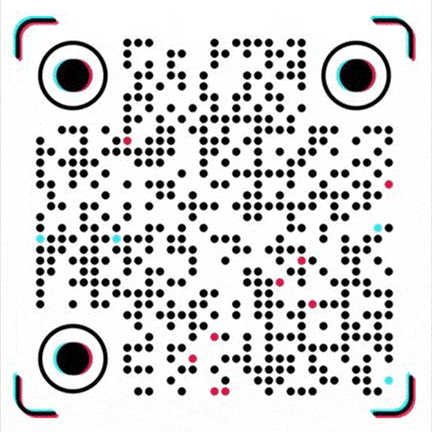Titanium Dioxide: Forms & Functions
The white pigments that we usually see, and the functional fillers added to many products, the most used is titanium dioxide, its chemical name is titanium dioxide, and its chemical formula is TiO₂. Because of the different crystal structures, production methods, surface treatment processes, and different uses in different places, titanium dioxide is also divided into many categories.
The crystal structure of titanium dioxide directly affects its optical properties and physical stability. It is mainly divided into three crystal forms, of which rutile and anatase account for more than 99% of industrial applications:
1. Rutile - the leader of high-performance outdoor applications
Structural characteristics: tetragonal crystal system, Ti⁴⁺ and O²⁻ in the crystal form a tight octahedral structure, with high lattice energy (8.5eV) and a refractive index of 2.71. It is one of the white pigments with the highest refractive index in nature.
Key performance:
Hiding power: 15-20g/m² per unit area can completely cover, which is about 30% higher than anatase;
Weather resistance: It is not easy to produce photocatalytic reaction under ultraviolet irradiation, and it will not powder after 5-10 years of outdoor use.
It is suitable for scenes such as automobile paint and exterior wall paint;
Surface treatment: It must be coated with inorganic coatings such as Al₂O₃ and SiO₂ and organic coatings of silane coupling agents to enhance dispersibility and weather resistance (such as Chemours R-103 and Longmang Baililian LR-886).
Application areas: high-end coatings (original automobile paint, ship anti-corrosion paint), outdoor plastics (shed film, pipelines), papermaking (coated paper coating), etc.
2. Anatase - general-purpose indoor type with cost-effectiveness priority
Structural characteristics: tetragonal system, but loose crystal structure, refractive index 2.55, lattice energy 7.8eV, poor light stability
Key performance:
Whiteness: high purity (TiO₂ content ≥ 98%), good color saturation, suitable for light color system.
Cost advantage: simple production process (mainly sulfuric acid method), no high temperature calcination and complex coating are required, and the price is 30%-40% lower than rutile type.
Limitations: yellowing after 1-2 years of outdoor use, poor dispersibility (primary particles are easy to agglomerate).
Application areas: interior wall coatings, ordinary plastics (toys, home appliance shells), paper fillers (newsprint, writing paper), water-based inks and other indoor scenes (such as DuPont ALT-105, China Nuclear Titanium Dioxide A-100).
3. Brookite - a rare crystal type with very few industrial applications
Structural characteristics: orthorhombic system, extremely unstable crystal structure, only exists briefly at high temperature (1100-1300℃), and has very few natural reserves.
Performance and application: The refractive index is 2.58, which is between rutile and anatase. However, due to poor thermal stability and high preparation cost, it has almost no industrial value and is only used in scientific research (such as catalyst carrier modification research).
The titanium dioxide production process is divided into two major systems, which directly affect the product purity, particle size distribution and impurity content:
1. Chlorination titanium dioxide - a representative of high-end and environmental protection
Process principle: Using rutile ore or artificial rutile as raw material, chlorination (TiO₂+Cl₂+C→TiCl₄) and oxidation (TiCl₄+O₂→TiO₂+Cl₂) are used to generate rutile titanium dioxide, and the by-product chlorine can be recycled.
Core advantages:
High purity: impurity (Fe, Cr, V) content
Uniform particle size: average particle size 0.2-0.3μm, narrow distribution, good dispersibility.
Environmental protection: waste gas and wastewater emissions are 80% less than the sulfuric acid method, in line with EU REACH regulations.
Product type: Only rutile type can be produced, representative products such as Chemours Ti-Pure® R-350 and Trono Tiona® 595.
2. Titanium dioxide produced by sulfuric acid method - cost-oriented mainstream process
Process principle: Using ilmenite (FeTiO₃) as raw material, it undergoes sulfuric acid acid hydrolysis (FeTiO₃+H₂SO₄→TiOSO₄+FeSO₄), hydrolysis (TiOSO₄+H₂O→TiO₂・nH₂O), and calcination to generate titanium dioxide, which can produce anatase or rutile type (converter needs to be added).
Core features:
Low cost: The price of raw material ilmenite is only 1/3 of rutile ore, with low equipment investment, suitable for the mid- and low-end market.
High impurities: Contains metal ions such as Fe²⁺ and Mn²⁺, which affect weather resistance and need to be improved by coating treatment.
Environmental challenges: Each ton of product produces 8-10 tons of acidic wastewater (pH<2), and the treatment cost is high.
Product types: Anatase (such as Pangang Vanadium Titanium A101), Sulfate Process Rutile (such as Longmang Billions LR-918).
To adapt to different application scenarios, titanium dioxide needs to optimize performance through surface treatment to form differentiated product types:
1. Inorganic coated titanium dioxide
Treatment method: Coat the surface of titanium dioxide particles with one or more layers of metal oxides (such as Al₂O₃, SiO₂, ZrO₂) to form an inert protective layer.
Performance improvement:
Weather resistance: Al₂O₃ coating can block ultraviolet rays and delay substrate aging (such as titanium dioxide for automotive paint requires Al₂O₃ coating amount ≥2%).
Chemical resistance: ZrO₂ coating enhances acid and alkali corrosion resistance and is suitable for industrial anti-corrosion coatings.
Typical product: Huntsman TranXtend® HCR-800 (Al₂O₃+SiO₂ double-layer coating).
2. Organic coated titanium dioxide
Processing method: Coating with organic substances such as silane, titanate, and advanced fatty acids to improve dispersibility in organic media.
Application scenarios:
Plastic industry: After treatment with silane coupling agent, the dispersibility of titanium dioxide in polyethylene is improved to avoid the decrease in mechanical properties caused by agglomeration.
Ink industry: Fatty acid coating reduces system viscosity and improves printing adaptability.
Typical product: Ishihara Industry CR-50 (stearic acid coating).
3. Composite coated titanium dioxide
Processing method: Inorganic coating first and then organic coating, combining the advantages of both, is the mainstream processing method for high-end titanium dioxide.
Performance advantages:
Weather resistance + dispersibility synergistic improvement: such as first coating Al₂O₃ (weather resistance), and then using titanate (dispersion) treatment, suitable for high-demand scenarios (such as photovoltaic backplane coating).
Typical product: Chemours Ti-Pure® R-706 (Al₂O₃+ organic silicon composite coating).
According to the characteristics of downstream industries, titanium dioxide has derived specialized types and formed market segments:
1. Titanium dioxide for coatings
Type differences:
Architectural coatings: rutile type (high weather resistance) for exterior walls, anatase type (high whiteness) for interior walls.
Automotive coatings: Chloride rutile type + multi-layer coating required to meet gloss (≥90°) and weather resistance (QUV test 1000 hours without powdering).
Anti-corrosion coatings: ZrO₂ coated rutile type, salt spray resistance > 5000 hours.
Representative products: DuPont R-902+ (special for automotive repair paint).
2. Titanium dioxide for plastics
Performance requirements:
Outdoor plastics: rutile type + silane coating to prevent embrittlement caused by ultraviolet rays (for example, after adding 3% rutile type to agricultural greenhouse film, the elongation at break retention rate is increased by 40%);
Transparent plastics: nano-level rutile type (particle size
Representative products: Tiona® 696 (organic coating type for plastics).
3. Titanium dioxide for papermaking
Type characteristics:
Filler grade: anatase type, using high whiteness to improve paper opacity, adding 5-10% (such as newsprint);
Coating grade: rutile type + Al₂O₃ coating to improve printing gloss, used for coated paper (coating amount 20-30g/m²).
Representative products: Kronos® 2310 (special for papermaking coating).
4. Special functional titanium dioxide
Nano-grade titanium dioxide: particle size
Conductive titanium dioxide: surface coated with conductive layers such as SnO₂, In₂O₃, used for antistatic coatings and plastics (volume resistivity
Food-grade titanium dioxide: meets FDA standards (21 CFR 178.3297), purity ≥99.5%, used for food packaging inks and sugar-coated tablets (such as JIS K5102 standard products).
The classification of titanium dioxide is the result of the interaction of crystal structure, production process, surface treatment and application scenarios: from the basic rutile and anatase types, to the process division of chlorination and sulfuric acid methods, to functional coating and scenario segmentation, each type corresponds to specific technical logic and market demand.
Our platform connects hundreds of verified Chinese chemical suppliers with buyers worldwide, promoting transparent transactions, better business opportunities, and high-value partnerships. Whether you are looking for bulk commodities, specialty chemicals, or customized procurement services, TDD-Global is trustworthy to be your fist choice.















